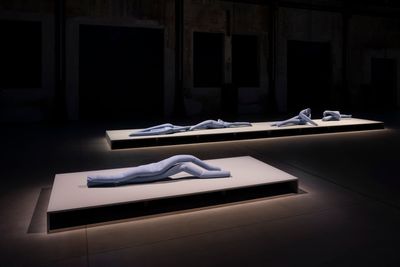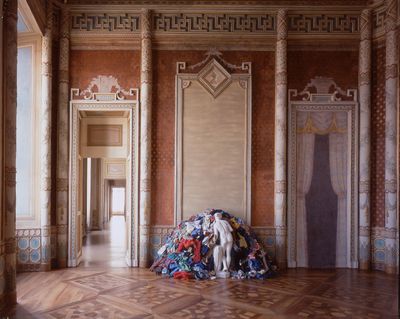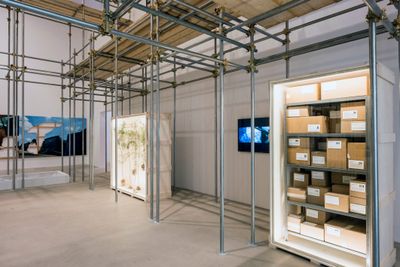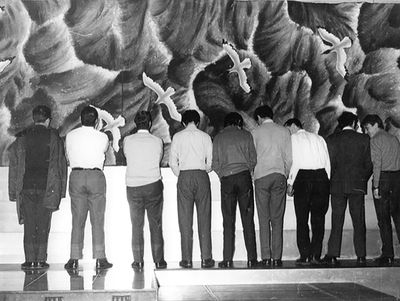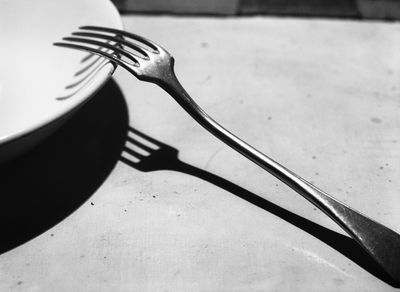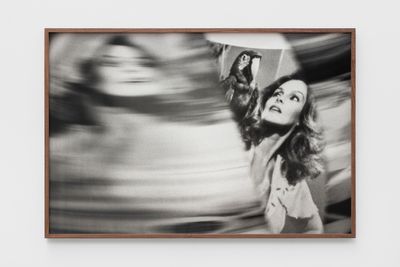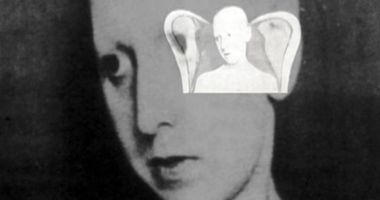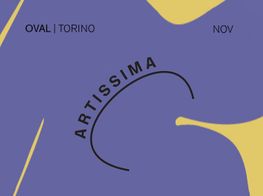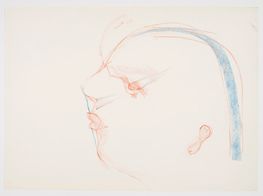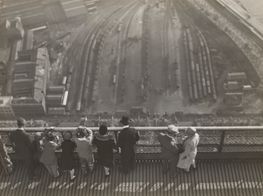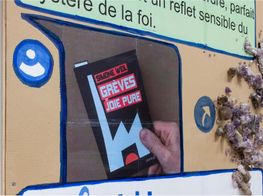Torino Art Week 2023: 7 Shows to See
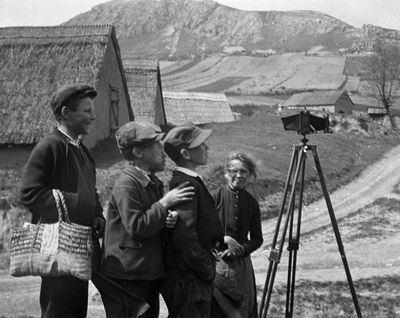
André Kertész, Enfants admirant mon appareil photographique, Budafok (1919). © Donation André Kertész, Ministère de la Culture (France), Médiathèque du patrimoine et de la photographie, diffusion RMN-GP.
It was in Turin, at the dining table of artists Mario and Marisa Merz, that Italian critic Germano Celant drafted his seminal manifesto introducing Arte Povera artists in 1967, later published in Flash Art, calling for a resistance against polished aesthetics.
This legacy is revived over Torino Art Week, which returns from 1 to 5 November 2023 to host modern and contemporary art across the city's galleries, institutions and art fairs, including the stalwart Artissima.
Below, we share seven exhibitions to see over the week and beyond, including two showings focused on photography.
Marisa Merz
Giorgio Persano, Via Stampatori 4 / Tucci Russo, Via D. Bertolotti 2
28 October 2023–24 February 2024
Expect: a dual-gallery homage to a local Arte Povera artist who asserted herself amid male contemporaries in the late 1960s, centring on her figurative work.
Turin-born artist Marisa Merz, the only female member of Arte Povera and a Venice Biennale Golden Lion for Lifetime Achievement recipient, only arrived at art four decades into her life after studying classical ballet and modelling for painters.
It was at Merz's kitchen table that Italian critic Germano Celant wrote his 1967 manifesto 'Arte Povera: Notes for a Guerrilla War', which identifies a radical group of Italian artists—including Marisa's husband, Mario, but not her—who opted out from traditional materials and mediums, and by association their markets, to sculpt with found and costless debris.
Merz's early hanging mobile sculptures were made of battered aluminium sheets that took on ethereal appearances within gallery spaces. Modelled after familiar objects such as clothing or the human body, her later works reference motherhood and her daughter, Beatrice, to form what the artist called 'living sculptures' operating beyond time, intentionally untitled and undated.
Sara Enrico: Tainted Lovers
OGR Torino, Corso Castelfidardo 2
3 November–10 December 2023
Expect: tactile sculptures made of fabric, concrete, foam, and rubber, which explore object surface, structural tensions, and perception.
Turin-born artist Sara Enrico first studied painting restoration in Florence before coming to a practice that performs material reconstructions via handicrafts and technology through which she analyses traditional mediums such as painting and sculpture.
Speaking to this intersection, Enrico's sculptural installation The Jumpsuit Theme (2017–ongoing) at the 2022 Venice Biennale's Central Pavilion presented tangled limbs of concrete poured into bright latex fabrics, spread above a platform in resting positions as if bodies performing a passive protest.
The installation took the T-shaped jumpsuit invented by Futurist artist Thayaht in 1919 as the point of departure, a functional item through which Enrico explored how clothing and sculpture, both external elements, can be used to convey internal states of refusal and respite.
At OGR Torino, Enrico is showing several sculptures combined into an installation focusing on perception and physical properties. In the gallery nearby one can experience Sarah Sze's kaleidoscopic installation in person, as part of Metronome on view until 11 February 2024.
Michelangelo Pistoletto: Many of One
Castello di Rivoli, Piazzale Mafalda di Savoia 2
2 November 2023–25 February 2024
Expect: an interactive experience inside architecture within architecture, housing experts on various subject matters alongside artworks.
Castello di Rivoli presents Molti di uno (Many of One), a scaffolding of 29 interconnected rooms that each takes the theme of a social principle, including culture, science, politics, and economics, as to envision a city of the future or a 'new ethically responsible community'.
Another major figure in the Arte Povera movement, the 90-year-old Italian artist and theorist has worked to bring together art and life since the 1950s, notably through experimental performances, sculptural installations, and mirror paintings. Pistoletto's iconic mirror works, which can be traced back to as early as 1961, were initially made with metallic paint on canvas before the artist moved on to polished steel, allowing viewers to integrate the pictorial space through their projected reflections.
At Castello di Rivoli, each room will contain a subject specialist—doctors, gardeners, librarians—over the exhibition period, informing on topics such as nutrition, ecology, health, and writing.
Khalil Rabah: Through the Palestinian Museum of Natural History and Humankind
Fondazione Merz, Via Limone 24
30 October 2023–28 January 2024
Expect: an archaeological site staged across paintings, sculptures, and installations, speaking to the shortcomings of museum records to communicate fragmented histories.
Khalil Rabah founded the Palestinian Museum of Natural History and Humankind in 2003 as a nomadic archive for Palestine. The project's latest iteration arrives in Turin as casualties from the Israel-Hamas conflict continue to grow in ever-increasing numbers.
Rabah modelled the fictional institution after Western museums to emphasise the power of cultural institutions to shape cultural identities and narratives. His practice addresses the gaps within institutional records with an eye for experiences of exile and displacement, as with that of Palestinians after the Arab-Israeli War of 1948.
According to the artist, this museum is one that 'rests nowhere while waiting for our return', at once 'cubist in its impossibility', 'occupied' and 'exiled at home', and a 'local rehabilitation of the future'. At Fondazione Merz, Rabah suggests that information is never complete by inviting the audience to piece together historical records through a scatter of documentation and clues.
Car Crash: Piero Gilardi and Arte Povera
Parco Arte Vivente (PAV), Via Giordano Bruno 31
4 November 2023–28 April 2024
Expect: a glimpse into the early years of an artist and environmentalist's project to re-enchant the world with nature and contributions to Arte Povera.
The late artist and environmentalist Piero Gilardi founded the experimental art centre Parco Arte Vivante (PAV) in 2008, where art and nature intersect across an open-air exhibition site and museum occupying a former 23,000 square-metre industrial space.
In the 1960s, Gilardi became known for his 'Nature Carpets' sculptures: cuts of terrains, abundant with realistic garden vegetables, rocks, and tree trunks, often made from rolls of polyurethane foam and other synthetic materials and sold as chunks of the natural world.
Gilardi conceived these sculptures in relation to his theory of micro-emotive art, which took into consideration the subjectivities and experiences of both the artist and viewers, perhaps anticipating people's gradual disconnect from natural spaces. Ironically, the artist sought to mend the gap by using biotechnology and manufacturing to create appealing surfaces.
Car Crash is the first of a series of exhibitions at PAV dedicated to Gilardi's contributions to Arte Povera, with whose members he exhibited, built archives, and shared regard for functionality as noted in the artist's wearable dress designs.
André Kertész: L'opera 1912-1982
CAMERA, Via delle Rosine 18
19 October 2023–4 February 2024
Expect: more than 150 photographs shot in Hungary and Paris during the 1920s and 30s, including images made in the studio of artist Piet Mondrian.
This major retrospective of Hungarian photographer André Kertész, known for his contributions to photographic composition and photo-essay, traces his early career in Hungary and later involvement with the Dadaists in Paris, where he captured the vibrancy of local life with a blend of realism, surrealism, and unorthodox framing.
Among the artist's best-known works, The Fork, Paris (1928) spoke to Kertész's eye for its balanced composition and capacity for narrative and abstraction with the still-life image of a fork resting, almost hovering, above the brim of a plate. Within the image, sharp tonal contrasts and diverse textures of metal, porcelain, table, and shadow generate a sense of realism, while the close-up view, arranged like a cinematic frame, suggests an unfolding narrative.
In Paris, Kertész became known for his unorthodox angles and evocative compositions across still-life and landscapes, but found more success as a commercial photographer than as an artist. He spent the final decades of his life in New York, where he shot editorials for Vogue, Harper's Bazaar, and Coronet, worked for Condé Nast from 1949 to 1962, and eventually presented a solo exhibition at the Museum of Modern Art in 1964.
All These Fleeting Perfections
Biblioteca civica Geisser, Corso Casale 5
27 October–5 November 2023
Expect: a preview of Turin's upcoming photography festival across photographs, videos, installations, and paintings exploring the 'post-photographic'.
Curated by Italian art critic Domenico Quaranta, All These Fleeting Perfections introduces the first EXPOSED, Torino Foto Festival, which will be inaugurated in May 2024 under the theme New Landscapes.
The exhibition explores how the photographic medium attempts to convey reality in times that have moved beyond realistic representation and simple knowledge claims through the works of Thomas Hirschhorn, David Horvitz, Claude Cahun, and Voluspa Jarpa, among others.
On 4 November, the organisation will also present their first contemporary photography grant worth EUR 20,000. Another preview of the festival will be held in Paris during PARIS PHOTO (9–12 November 2023), ahead of the opening in Spring 2024, which will bring temporary exhibitions, a specialised fair, and educational programmes to Turin's vibrant cultural fabric. —[O]



